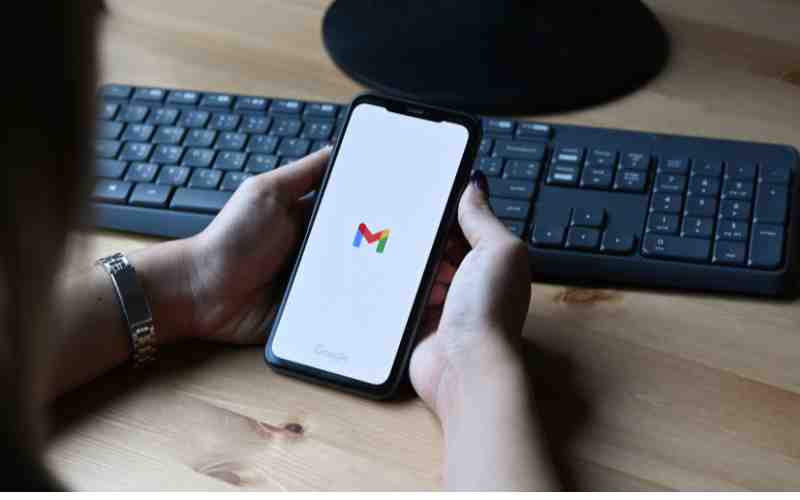Gmail has long been the dominant free email service, with over 1.5 billion users worldwide. However, privacy concerns, storage limits, restricted customization, and too many ads have caused some to look elsewhere for Gmail alternatives.
Fortunately, viable competitors offer innovative features and benefits that Gmail lacks. Alternative email services are available with larger storage, improved organization, built-in calendars/contacts, enhanced security, and more.
We will compare the top 10 best Gmail alternatives. Evaluating factors like available storage, ads, functionality, and extra features helps identify the best options to possibly switch to.
Read on to discover excellent Gmail replacements!
Read Also: 10 Best Linux Apps and Software
Top 10 Gmail Alternatives

Here are the best Gmail alternatives:
1. Outlook
Owned by Microsoft, Outlook provides a clean and minimalist interface for web-based email. It offers 15GB of free storage space, which is the same as Gmail.
However, Outlook does not have any ads in the free version. This makes for a smooth, uncluttered inbox experience.
Outlook also comes with an integrated calendar feature that syncs across devices. You can easily schedule appointments, view your calendar, and share it with others.
The search functionality in Outlook is also powerful, helping you quickly find emails even years back. For customization, you can create folders, change themes, and add add-ins to improve productivity.
Overall, Outlook is a strong all-around option for those looking for simple but effective emails without disruptive ads.
2. Yahoo Mail
Yahoo Mail is one of the longest-running web email services, launched in 1997. The huge benefit Yahoo Mail provides over Gmail is 1TB of free storage space, which is over 60X more than Gmail’s default.
This makes it easy to keep a cluttered inbox without worrying about hitting limits.
Yahoo Mail does have some ads, but they are less intrusive than Gmail’s targeted ads and can be opted out of for an ad-free experience.
Importing your Gmail history into Yahoo is simple with their mail forwarding tool. Overall, the interface is straightforward to use.
Yahoo Mail also offers easy photo sharing and group conversations for collaboration. For those with big inboxes, the generous 1TB of Yahoo storage is a major perk.
3. Hey
Hey is a relatively new email service that started in 2020 that aims to provide a simplified, distraction-free email experience.
As a paid service, Hey does not show any ads in your inbox. Hey offers some innovative features like the ability to create custom email aliases on the fly.
This allows you to give unique addresses to different contacts for filtering purposes.
The Hey mobile app also groups message threads into useful categories like The Feed, Paper Trail, and Imbox for quick access.
Hey provides a clean, minimalist inbox with no spam folder needed. However, the initial storage space is limited to just 1GB.
But the ad-free design and unique features make Hey a standout if you want a decluttered inbox.
4. Zoho Mail
Zoho Mail is a feature-packed email platform with a generous 5GB of starter storage space. Even better, you can earn more storage by referring friends and completing your Zoho profile.
Zoho really shines when it comes to inbox organization. Custom labels, rules, reminders, and filters help keep your inbox under control.
The built-in calendar and note-taking also boost productivity. Zoho offers strong security protections like encrypted data centers, two-factor authentication, and auto-blocking of suspicious logins.
For companies, the group email features and shared contacts/calendars help entire teams collaborate.
Zoho does have some minimal ads, but an upgrade can remove them. Overall, Zoho is ideal for those who really want to get their inbox completely organized.
5. FastMail
FastMail positions itself as a premium, ad-free email service. Although paid plans are available, it provides 50GB of storage space even on the free plan, which is far more than Gmail’s 15GB.
FastMail also deeply integrates with calendars, contacts, and files for a unified experience.
The mobile app offers instant search, customizable swipe gestures, and inbox theming options.
For privacy protection, FastMail uses two-factor authentication and encrypts data with TLS. Accounts can also be protected by passphrases rather than typical passwords.
FastMail is designed to work well with other productivity services like Dropbox, Trello, and Slack.
While the free plan has limited support, the premium features and robust apps make FastMail stand out for power email users.
If you are looking for a lot of space and customization without ads, FastMail is a great choice.
Read Also: 10 Best Apps Like Snapchat You Should Try
6. Mailfence
Mailfence sets itself apart by being based in Belgium and offering a very secure, private-focused email service.
Right off the bat, Mailfence provides an enormous 500GB of free storage. Emails feature end-to-end encryption between Mailfence users. Contacts, calendars, and documents can all be shared as well.
The mobile apps allow easy access and notifications on the go. Two-factor authentication adds an extra layer of account protection.
Mailfence also has a zero-knowledge policy, meaning no employee can access your confidential data. The interface allows deep search, flags, filters, and labels too.
If you have privacy concerns with US email providers, Mailfence built by European privacy laws offers excellent protection.
7. Mailbox.org
Mailbox.org is another Europe-based privacy-centric email provider that is based in Germany. Like Mailfence, a zero-knowledge policy ensures employees do not access your account details or emails.
There is 2GB of initial storage and larger paid plans available. But the true appeal is anonymity and security.
Mailbox.org offers anonymous registration without phone numbers or real names required. Every email has a unique address to protect your identity.
OpenPGP and TLS encryption keep emails secured from end to end. Plus, Mailbox.org provides 100 aliases you can use for anonymization.
If you want private, anonymous email shielded from government surveillance, Mailbox.org is an excellent choice.
8. ProtonMail
ProtonMail has gained popularity as an extremely secure email provider based in Switzerland.
Known for “military-grade” end-to-end encryption, all emails are secured such that even ProtonMail itself cannot access the content.
Emails can also be set to self-destruct after a time period you specify. ProtonMail works great in conjunction with ProtonVPN for anonymous browsing.
While the free storage space is limited to just 500MB, paid plans can upgrade to 5GB and more. Extra features like calendars, contacts, and file storage are also unlocked for paid users.
If your main goal is airtight security and encryption, ProtonMail is one of the best options available.
9. Apple iCloud Mail
For those deeply embedded in the Apple ecosystem with iPhones, iPads, and Macs, iCloud Mail is a convenient choice that seamlessly integrates across devices.
It comes with a fairly limited 5GB of free space. But iCloud Mail enables you to easily sync email, calendars, contacts, reminders, and notes across all your Apple gadgets.
It also makes sharing photos, videos, documents, and more with other iOS users exceptionally simple. iCloud backs up your iPhone and iPad too. So everything stays in sync.
The antivirus and spam filtering included keeping your inbox clean. While best suited for diehard Apple fans, iCloud Mail brings useful cohesion across the product line.
10. GMX Mail
Rounding out the list is GMX Mail, which has been popular in Germany for over 20 years but offers English interfaces.
Right away, GMX provides 10GB of free storage, outpacing Gmail’s initial allowance. Email plans with unlimited storage are available for upgrade as well.
GMX has flexible syncing across devices, customizable spam filtering, and encrypted data transmission for security.
One handy feature is disposable email addresses, which allow you to protect your identity when signing up for online services.
GMC Mail has been around since the 1990s email dawn, and its experience shows in the polished, continually updated platform. For a mature, stable email provider, GMX is a great international option.
Factors to Consider When Choosing Gmail Alternatives
Before choosing Gmail alternatives its best to consider these factors:
Evaluating Your Email Needs
When considering alternatives, think about your specific email priorities:
- Storage needs – Do you need lots of space for a cluttered inbox?
- Ads – How distracting and invasive are ads in the service?
- Security features – Do you want robust encryption and privacy protection?
- Functionality – What tools like calendars and contacts do you need?
- Ease of transition – Will it be simple to transfer your Gmail history?
Once you know your must-have features, you can zero in on the right option. Test out a few to determine the best Gmail replacement for your personal or work email needs.
Storage Size Comparison
One key factor when evaluating email providers is how much free storage space they provide:
- Gmail – 15GB
- Outlook – 15GB
- Yahoo Mail – 1TB
- Zoho Mail – 5GB
- Mailfence – 500GB
- ProtonMail – 500MB
- Hey – 1GB
- Fastmail – 50GB
- Apple iCloud Mail – 5GB
- Mailbox.org – 2GB
With only 15GB default storage, Gmail quickly fills up requiring you to pay for more space or constantly delete emails.
Prevalence of Ads
Another consideration is how intrusive and prevalent ads are:
- Gmail – Very frequent ads targeted using the content of emails. Cannot fully eliminate them.
- Outlook – No ads with the free version.
- Yahoo – Some ads but less targeted than Gmail. Can opt-out.
- Zoho – Infrequent basic ads. Optional ad-free upgrade.
- Fastmail – No ads in the free version. Ad removal is a paid feature.
One appeal of switching providers is reducing or eliminating email ads altogether.
Read Also: 10 Best Apps Like Netflix and Amazon Prime
To Sum Up
While Gmail still works fine for many, excellent alternative email services exist that are worth exploring as replacements.
The top options provide more storage, fewer ads, enhanced security, better functionality, and helpful organization.
Take time to evaluate your specific email priorities and needs. Then try out services like Outlook, Yahoo Mail, Hey, Zoho, FastMail, or Mailbox.org to find an improved Gmail alternative.
RELATED POST
10 Best Apps for Learning French
10 Best Chess Apps for Android
Best Apps for Learning Languages
7 Best Apps for Editing Videos on Phone for Free
10 Best Linux Text Editors in 2023
